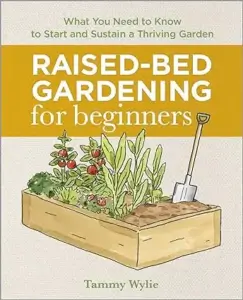You can start growing your vegetables at home even if you are still a beginner in home gardening.
Not only will gardening beautify your home, but it will also provide you with many benefits. Especially if you live in rural areas, you can sell your garden product via the local market. It is a great way to fill your free time and it is also a great way to relieve stress. However, a lot of people are still reluctant to start gardening because they don’t know how to do it.
If you are one of them, don’t worry! In this post, I am going to give you a quick and easy tutorial on how to start home gardening for beginners. Are you interested? Read on to find out more

Step 1: Choosing the Right Place to Start Home Gardening
Before you begin, you need to make sure that the place you want to start home gardening is the right place. First, you need to decide which area you want to create your garden in. Are you going to have a front yard or a backyard? When deciding the area you want to grow your plants in, make sure that you have access to sunlight and that you have the right type of plants. You also need to consider the soil conditions.
You don’t want to pick it at random because there are several things that you need to keep in mind when it comes to gardening. For instance, some plants need more sunlight than others, so if you plant them in a shady spot, they won’t grow well. Some plants can’t be planted in a dry soil contour or under larger trees, so make sure you check and make sure you’re planting in a good spot.
Step 2: Cultivate Your Yard
Before you start home gardening, make sure your yard is in good condition. Before you start home gardening activities, make sure you clear your yard of weeds, grass, and other unwanted plants. Your yard should also be free of chemicals and their residue that can harm soil fertility.
If the soil is loose and dark, it indicates that the texture of the soil is already sufficient; you could just need to add compost. Meanwhile, you need to perform incentive tillage by hoeing the soil, loosening it, and adding compost or manure in addition to additional chemical fertilizers if the texture of the soil appears rather light-colored, pale, and dense.
The use of chemical fertilizers will be avoided as long as compost or manure is available, as using chemicals over an extended period will harm the texture of the soil.
Step 3: Choose What Kind of Plants to Grow

When talking about home gardening for beginners. You had to decide what types of plants you wanted to cultivate. You have the freedom to select whichever plants you prefer. Would you like to grow ornamental plants such as orchids or household plants like vegetables? The care and maintenance will differ substantially between orchids and veggie plants. Tending to orchids will certainly vary compared to vegetable plants. Everything from the fertilizer used and, the watering schedule, to the planting location, will be different.
However, if you want to grow plants that are useful for household needs while also providing nutrition, you can plant vegetables. There are many vegetable varieties you can cultivate if you want to garden at home, such as sweet potatoes, chili peppers, tomatoes, papayas, and more.
Try to choose plants that are easy to maintain and can be quickly handled if afflicted by pests or diseases. For veggie plants, it is best to plant relatively short-lived vegetable varieties so they can be harvested promptly and enjoyed right away.
Meanwhile, to add visual appeal, opt for plants with attractive appearances like kale, spinach, purple eggplant, and tomatoes. Therefore, home gardening in addition to offering nutritional benefits can also beautify your house.
Step 4: Determine Plant Layout
When starting a home garden, you need to consider the sunlight needs of your plants. Some plants require a good amount of sun throughout the day to grow well. So if you are planting vegetables, put them on the east side of your garden so they can get morning sun. Place larger, taller plants on the west side so they don’t shade the smaller plants in the morning and afternoon.
This layout allows all your plants to get the sun exposure they require since lack of sunlight disrupts photosynthesis and growth even though different plants have different sunlight needs.
In addition, pay attention to the spacing between plants. Planting too closely together can hinder growth, create uneven sunlight, and cause plants to compete for nutrients.
Step 5: Home Gardening for Beginner Maintenance
If you have planted a garden, you must commit to caring for it properly. Like all living things, plants require diligent maintenance. After planting, be sure to water, fertilize, and weed regularly.
The weeds you remove can be utilized as organic fertilizer by burying them in the soil. As the plants decompose underground, they will enrich the soil with nutrients.
You must also pay close attention to watering the plants. Insufficient hydration will cause them to wither, inhibiting growth and reducing crop quality.
That covers the basics of home gardening for beginners that you should know. With the right knowledge and serious commitment, gardening is not difficult. What do you think? Does growing your garden appeal to you? For Complete Tutorial and Depth Guide, i think I can recommend the book you can look at it below:



